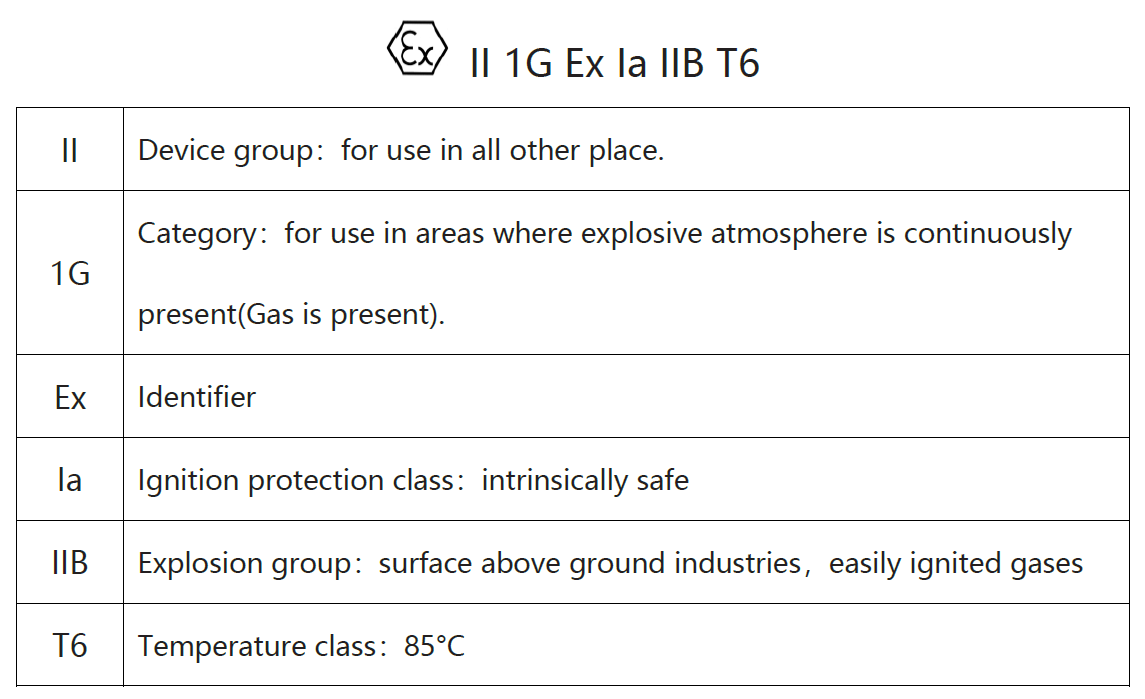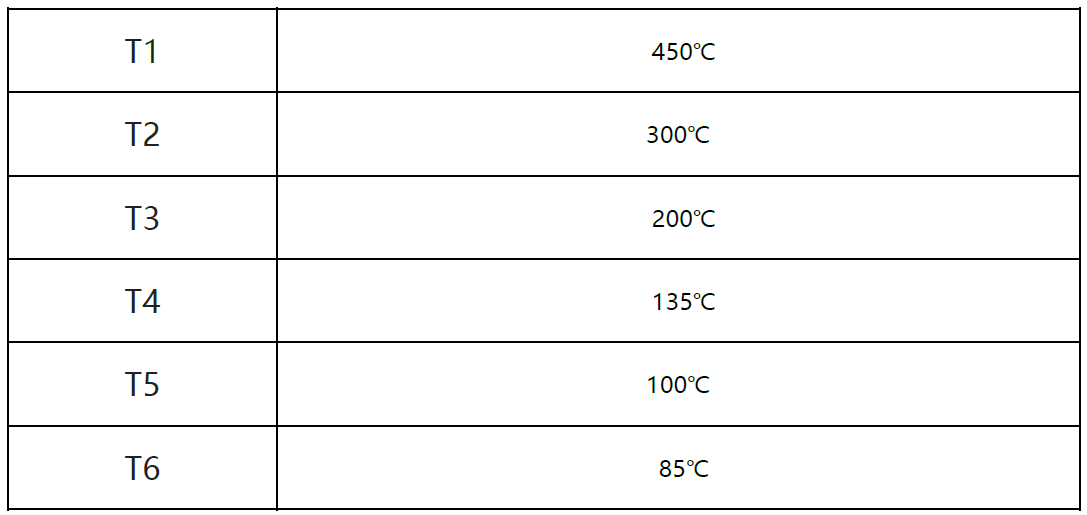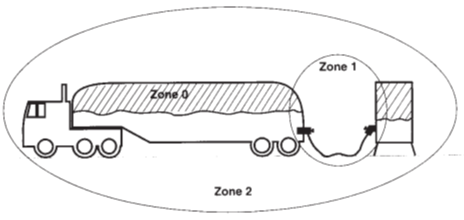
According to 2014/34/EU, a device that is to be used in an environment at risk of explosion may only be brought into the market if it satisfies the standards specified in the norm.
Compared with the previous directives, it must be noted that the specification refers not only to electrical but also to mechanical equipment (e.g. cylinders).
Devices are divided into categories and groups to accurately define the conditions of use. This definition is marked on the device and may appear as follows:
Example:

Device group
There are 2 groups of devices.
Devices of Group I, Category M are for use in underground mines and their above ground equipment, which are at risk from firedamp and/or inflammable dusts. (This is not given further coverage in this document).All other areas at risk of explosion are combined in Device Group II.
Identifier
EEx defines that this is an electrical device.
Ignition protection class
This defines which measures are used to ensure explosion protection.
The following ignition protection classes are used by AIRTEC:
m = Encapsulation, ia = Intrinsic safety, c = Safe by design
Other ignition protection classes are defined in EN 50014: 1997. The abbreviations are currently under review discussion.
It should be noted that devices in ignition protection class ia may only be supplied from circuits that are certified to be intrinsically safe.
Explosion group
Device group II is sub-divided into Explosion Groups A, B or C.
This classification is dependent on the typical material properties of the gases and vapors that occur.
The hazard level of materials increases from Explosion Group IIA to IIC. The requirements for the devices increase accordingly. If a device is approved for IIC, it can be used for all other explosion groups. Alternatively, the chemical formula or the name of the material can be stated here.
Temperature class

Category
The categories define which zones the devices may be used in. The classification states how frequently and in what concentration the ignitable mixture occurs. Furthermore, differentiation is made as to whether the hazard is due to gases, vapors and mists or due to dust.

Example of zone classification in gas Ex area.
Category 1
For devices, which guarantee a very high level of safety.
Intended for the case where an atmosphere at risk of explosion is to be expected frequently or continuously.
Devices in this category can also be used in Category 2 and 3.
Inflammable gases, vapors or mists
Zone 0 equivalent to Category 1G
Area in which an atmosphere at risk of explosion as a mixture of air and inflammable gases, vapors or mists is continuously or frequently present or present for long periods.
Inflammable dusts
Zone 20 equivalent to Category 1D
Area in which an atmosphere at risk of explosion in the form of a cloud of inflammable dust contained in the air is continuously or frequently present or present for long periods.
Category 2
For devices, which guarantee a high level of safety.
Intended for the case where an atmosphere at risk of explosion is to be expected.
Devices in this category can also be used in Category 3.
Inflammable gases, vapors or mists
Zone 1 equivalent to Category 2G
Area in which an atmosphere at risk of explosion as a mixture of air and inflammable gases, vapors or mists can form occasionally during normal operation.
Inflammable dusts
Zone 21 equivalent to Category 2D
Area in which an atmosphere at risk of explosion in the form of a cloud of inflammable dust contained in the air can form occasionally during normal operation.
Category 3
For devices, which guarantee a normal level of safety.
Intended for the case where an atmosphere at risk of explosion is to be expected rather infrequently and, if so,for only short periods.
Inflammable gases, vapors or mists
Zone 2 equivalent to Category 3G
Area in which an atmosphere at risk of explosion as a mixture of air and inflammable gases, vapors or mists does not normally occur at all or only for short periods during normal operation.
Inflammable dusts
Zone 22 equivalent to Category 3D
Area in which an atmosphere at risk of explosion in the form of a cloud of inflammable dust contained in the air does not normally occur at all or only for short periods during normal operation.